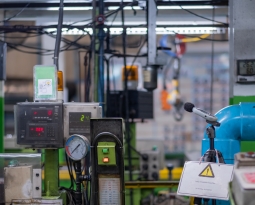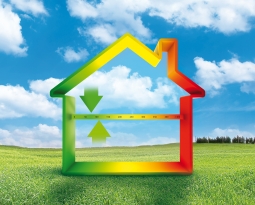People from all parts of the construction industry – designers, developers, energy assessors – feel an ever-increasing pressure to reduce carbon emissions and think long-term about sustainability. One way this pressure manifests is through the movement towards circular construction. This article takes a look at how circular construction is transforming the UK’s built environment.
What is Circular Construction?
The Circular Economy is a new economic model which rethinks the way we design and consume goods. Its aim is to reduce reliance on finite resources and to keep materials in use for as long as possible through processes like recycling and reusing.
Our current economic model is linear. It follows a ‘take, make, dispose’ system in which we design, use and then throw away materials without much thought about how they could still possibly serve us. The construction industry produces about 33% of the UK’s waste alone, and nearly 50% of waste worldwide. Material extraction will likely triple in the next 30 years and waste production is set to do the same by 2100.
This is where circular construction comes into play. Responsibility for circular construction does not only fall on the shoulders of on-site builders but is shared between everyone in the supply chain. It’s down to architects, engineers, M&E consultants, and the like to choose materials which have a longer life cycle.
What does Circular Construction look like?
Many circular principles look similar to pre-existing ambitions for a more sustainable built environment. Circular construction essentially aims to make these ambitions more commonplace.
The main purpose of circular construction is to maintain healthy buildings over a long period of time by taking into consideration its future needs and uses. Circular buildings are designed for flexibility, disassembly and remanufacture. Materials – especially ones like floor finishes which come in and out of fashion – will be easy to recycle so that only the minimum amount of residual waste is produced.
Circular construction is resource efficient, aiming to build with as few materials as possible. Raw materials used in the construction process will be extracted from renewable resources wherever possible. Manufacturing will occur in controlled environments using renewable energy. Utilisation of these materials will be maximised through careful management over their lifetime. Through service contracts and lease agreements, materials are maintained and bought back into the loop at the end of their service life.
The Cost of Circular Construction
The Department for Business, Energy and Industrial Strategy (BEIS) has reported that the cost of construction materials has experienced a sharp rise in the last few months: The overall cost of materials for new housing was 6.7 per cent higher in January 2021 than in the same month a year earlier.
Experts put this down to the unparalleled challenges that Covid-19 presents as well as new trade restrictions which have come into play post-Brexit. However, the price of construction materials has been on an upward trend throughout the past few years. Between 2017 and 2018, the average prices of construction materials in the UK rose by 4.9%.
Introducing a more circular approach may feel synonymous with a cost increase for developers. But the director of Changebuilding, Charlie Law explains that new circular business models actually present certain financial incentives. He says: “There is still a perceived understanding that [developers] need to own all the materials in their building, when in fact all they need to own is the space the building provides. Everything else could be owned by someone else who provides the client with a lease agreement or service contract”.
On top of this, circular construction can develop more efficient build methods and preventing shortage of resources. Afterall, a Circular Economy is restorative and regenerative by design.
Circular Economy Statement
The Greater London Authority (GLA) has published draft guidance on how to prepare Circular Economy Statements. The guidance sets out the steps that applications for domestic and non-domestic developments will need to take to meet the new sustainability requirements in the draft London Plan. The draft guidance has been in development since 2018. It has been informed by extensive engagement with a range of built environment stakeholders including with developers, architects, contractors, technical consultants, the public sector and academia.
Planning applications which fall under the GLA’s scope and the requirements of the new draft plan now need to be accompanied by a Circular Economy Statement. Essentially, this means that developers in the capital are required to submit detailed assessments of the building’s energy consumption over its entire life cycle as part of the planning application. This assessment must outline how materials will be reused after demolition and remediation, how use of new materials will be minimised. It must also include the development’s waste management strategy and performance monitoring.
Conclusion
Currently, the movement towards circular construction affects the build process mostly at the planning stage for developments in the capital. But there is accountability at every step of the build process to incorporate circular design principles. The build process must reduce the amount of waste produced, source materials in environmentally friendly ways, and it must look to repurpose materials at the end of their life. A circular design achieves sustainability by considering the buildings future needs and uses. Building under circular principles not only has ecological benefits, but the new business models it introduces could present developers with financial incentives.








